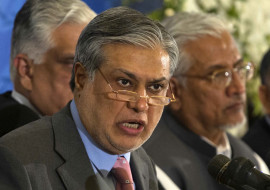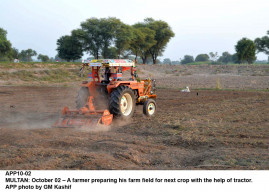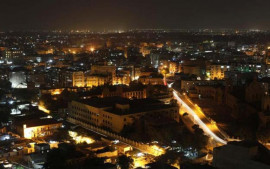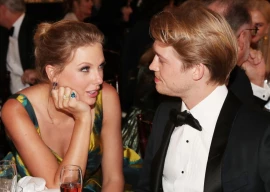
Dr Bengali argued that “there is a tiny upper class with bloated bank balances and a mass of poor with, literally, empty stomachs. The middle class is effectively non-existent as a political force”.
Govt’s savings offset by unchecked borrowings
Dr Bengali’s article is remarkable in many ways, but more so in being as the most abridged version of the narrative of inequality in Pakistan. He has also quoted from a recent Social Policy and Development Centre (SPDC) report, which says that the income share of the richest 20% of the population increased from 43.5% in 1987-88 to 48.7% in 2010-11, and that of the poorest 20% has shrunk from 8.8% to 7.0%.
This inequality narrative can be challenged on several accounts. To begin with, it is not correct to present the middle class as non-existent as a political force.
The ruling PML-N as well as the PTI are largely products of rising and vocal urban middle-classes, with the former representing the interests of trade and commerce, and the latter representing the interests of urban professionals though with substantial reliance on winning horses. Similarly, MQM is clearly a middle-class phenomenon, though the form and results of its organisational development do not bode well for a middle-class centric politics.
Contrary to the implication of the SPDC report, “the middle class has actually grown over time in Pakistan”, as Durre Nayab has argued in her paper, and it continues to expand. Depending upon how one defines it, it can be anywhere from 0 to 60% in Pakistan, however, according to the composite criteria of “education, occupation, income, lifestyle and housing” that she used, the middle class is close to 35% of our population, and it is increasing.
Fracturing of Pakistani politics
There is also a conceptual problem in the argument of income share of the rich versus poor. It implies as if the underlying stock of wealth and income is static over time, which is obviously not true, and there is a transfer from that static pool, which is not the case.
Consider a household. If one member earns Rs15,000 per month, another Rs20,000 and a third member earns Rs50,000 per month, then their respective shares in the household income will vary over time, but each member will be experiencing gains at different levels. It is possible that any one of these three members has greater relative gains than others, but this is not a zero sum game, as long as total income of the household is increasing.
Similarly, the national economy is not a zero sum game — the rich do not necessarily steal money from the poor, and if the income level of rich goes down, it does not necessarily flow to the poor. This is particularly true if there is a corrupt political and administrative structure that thrives on rent seeking.
Dr Bengali also writes that “markets are not neutral vis-à-vis income groups and regions. They respond to purchasing power, not to need, thereby serving the rich. “Well, on the contrary, precisely by being not neutral to income groups, markets are able to serve the needs, of course backed up by purchasing power, ie demands of most levels of income groups.
Consider the market of second-hand clothing, which is flourishing across the country. It is how the market has responded to one of the three needs of ‘roti-kapra-makaan’ (meal, clothing and shelter). One can only imagine the scenario if there is a Central Directorate of Clothes Manufacturing and Distribution responsible for neutrally supplying to all income groups. In the seventies, there was an entity established for this purpose in the field of roti, which is thankfully not needed any more.
Mixed picture of Pakistan's economy
Punjab Chief Minister Shahbaz Sharif relived that fantasy for a year under his Sasti Roti scheme, but mercifully it failed. Though remember that the government never fails; it just expands. Thus, there is now a Sasti Roti Food Authority enacted by Punjab Assembly, but no more Sasti Roti!
In context of Pakistan’s political economy, Dr Bengali is right to some extent in pointing out that wealth is a product of political power configuration. However, his analogy of Pakistan as a “Casino Economy” is wrong. I offer another analogy.
In his famous novel Animal Farm, George Orwell writes that “All animals are equal, but some animals are more equal than others”. This is actually a proclamation by the pigs that control the government in his novel. The sentence is a comment on governments, which claim absolute equality for their citizens but give power and privilege to the small elite.
There are certain rules in casino, and players abide by them even as they come to lose everything. Pakistan is less like a casino, and more like Animal Farm.
The writer is founder and executive director of PRIME Institute, an independent economic policy think tank based in Islamabad.
Published in The Express Tribune, October 10th, 2016.
Like Business on Facebook, follow @TribuneBiz on Twitter to stay informed and join in the conversation.

































1714024018-0/ModiLara-(1)1714024018-0-270x192.webp)









COMMENTS (1)
Comments are moderated and generally will be posted if they are on-topic and not abusive.
For more information, please see our Comments FAQ